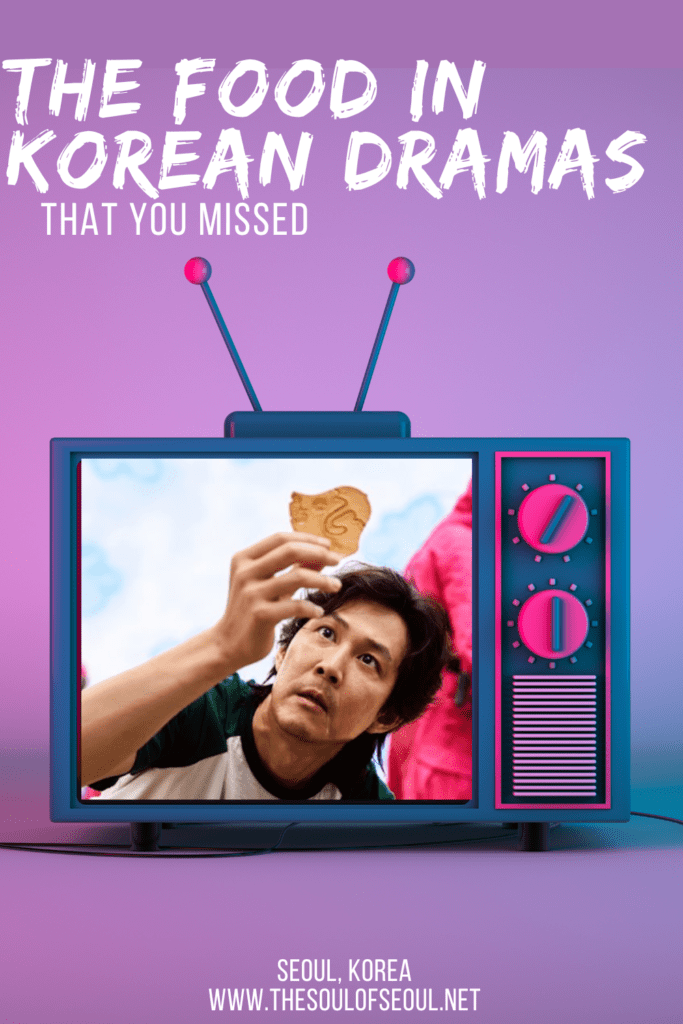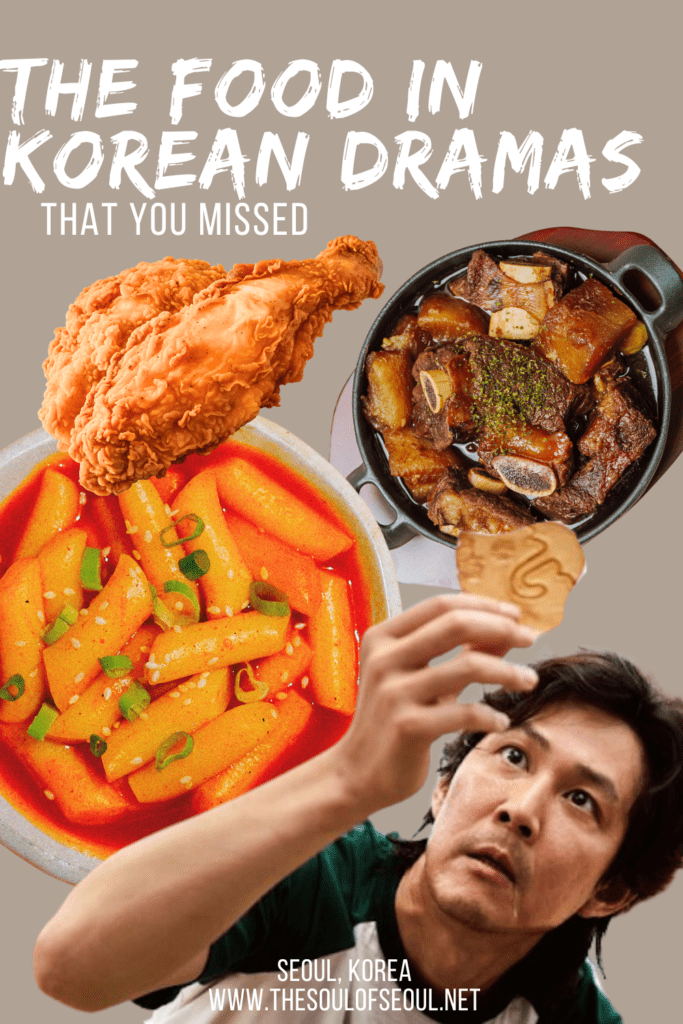Korean Gastronomy on Display: A Deep Dive into Iconic Foods in K-Dramas
Last Updated on June 25, 2024
In Korean culture, the significance of food extends beyond the everyday table and integrates into language and media, particularly in Korean dramas and films. When greeting someone in Korea, instead of asking “How are you?”, you may have noticed that people ask, “Have you eaten?” If you’ve ever watched a Korean drama or film you may have picked up on this, but the food on the table in each scene can also be an important narrative tool.
In many cases, filmmakers and producers have used specific Korean dishes in order to tell the viewer something about the people that are eating together. Specific Korean dishes can play a pivotal role in conveying messages about characters and social class in dramas and films if you know a bit more about Korean culture.

Get ready to learn about how the following Korean dramas and films used food to say something deeper:
- Parasite (기생충): Ram-don/Chapaguri (짜파구리)
- Dae-Jang-Geum (대장금): Braised Short Ribs (갈비찜)
- Dae-Jang-Geum (대장금): Omija hwachae (오미자 화채)
- Squid game (오징어게임): Dalgona and Traditional Korean Lunch Box (Dosirak)
- Vincenzo (빈센조): Tteokbokki (떡볶이)
- Itaewon Class (이태원 클라쓰): Sundubu jjigae (순두부 찌개)
- Crash Landing On You (사랑의 불시착): Chimaek (치맥)
(This post contains affiliate links, which means I receive a certain percentage of a sale if you purchase after clicking at no cost to you. Thank you for your support.)
Parasite (기생충): Ram-don/Chapaguri (짜파구리)
In 2019, the Korean movie Parasite gained global acclaim for its compelling story and remarkable characters, including the noteworthy ‘Ram-don/Chapaguri.’ This dish held significance in the movie, intriguing international viewers unfamiliar with it.

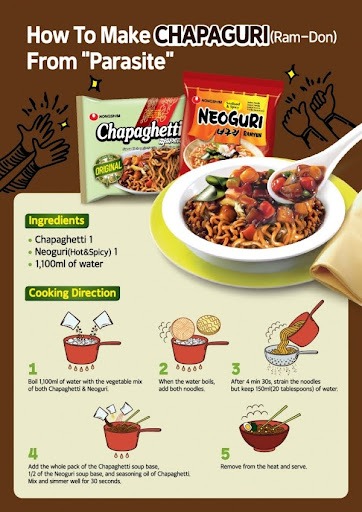
What is Ram-don (Chapaguri)?
It’s a dish created by combining two popular Korean instant noodles: ‘Chapagetti’ and ‘Neoguli.’ ‘Chapagetti’ features a soy sauce flavor, while ‘Neoguli’ is seafood-flavored—both are well-known instant noodles in Korea.
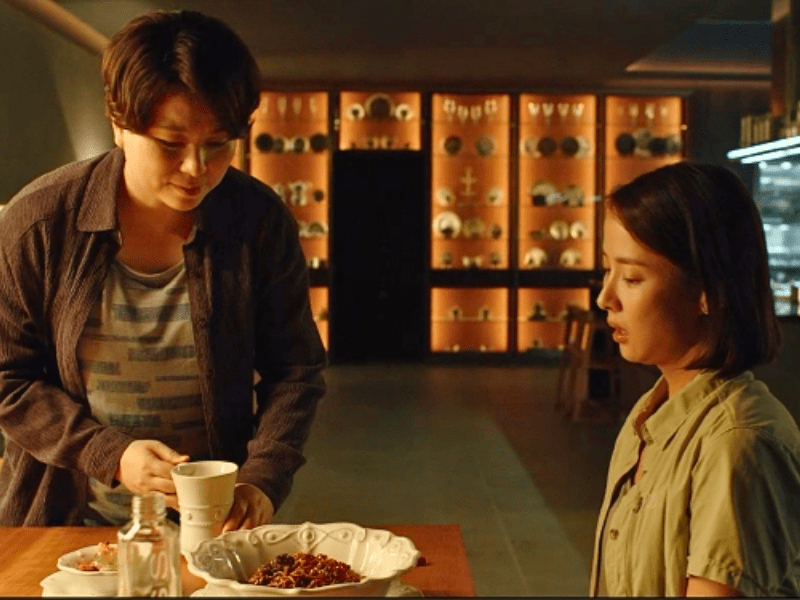
What does chapaguri mean in Parasite?
The pivotal scene using this dish highlights class distinctions between two families. The chef showcases relative deprivation when instructed by a wealthy woman to include expensive beef in the ramen, a notably inexpensive dish. This culinary moment became a symbol of social class differences in Korea, sparking worldwide interest in creating one’s own Chapaguri.
Crafting Chapaguri at home is straightforward. Boil the two ramens together, add their seasoning packets, and mix thoroughly. For a more luxurious version akin to ‘Parasite,’ consider adding meat or seafood. The dish’s allure lies in its simplicity and adaptability.
This example illustrates how Korean food can play a crucial role in dramas and films. However, without an understanding of the dish, the emotional impact may differ for non-Korean viewers.
Dae-Jang-Geum (대장금): Braised Short Ribs (갈비찜)
The Korean drama Dae Jang-Geum introduces viewers to delectable Korean royal court cuisine, with gal-bi-jjim (갈비찜), or braised short ribs, standing out prominently.
What is gal-bi-jjim (갈비찜)?
In Korean cooking, the term “jjim (찜)” is used when a recipe involves boiling or steaming. Gal-bi-jjim, a traditional Korean dish, is crafted by gently boiling beef ribs. Originating in the Korean royal family, it has evolved into a widely enjoyed dish.
What does gal-bi-jjim mean in Dae-Jang-Geum?
In Korea, beef-based dishes are often associated with luxury, typically savored during holidays, feasts, or special occasions for entertaining guests. Within Dae-Jang-Geum, gal-bi-jjim takes on a special role, symbolizing love, dedication, and sincerity during the king’s mother’s birthday celebration.
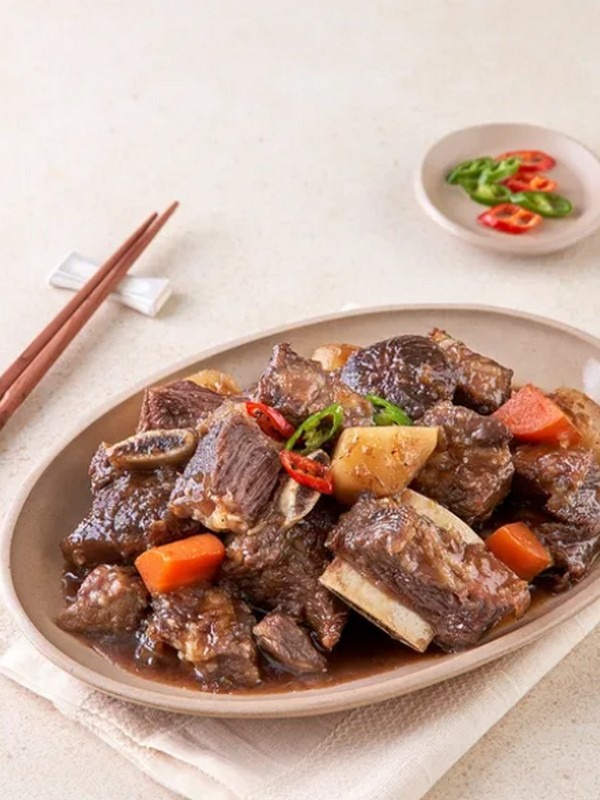
Dae-Jang-Geum (대장금): Omija hwachae (오미자 화채)
In dramas, omija hwachae often graces scenes depicting garden parties or gatherings of aristocrats on summer days. The drink’s vibrant red color captures viewers’ attention, conveying a sense of traditional Korean taste. Renowned for its luxurious taste and aroma, this beverage becomes a fitting choice for serving guests on special occasions, though if you’ve never had it, you wouldn’t know what that aroma is really like.
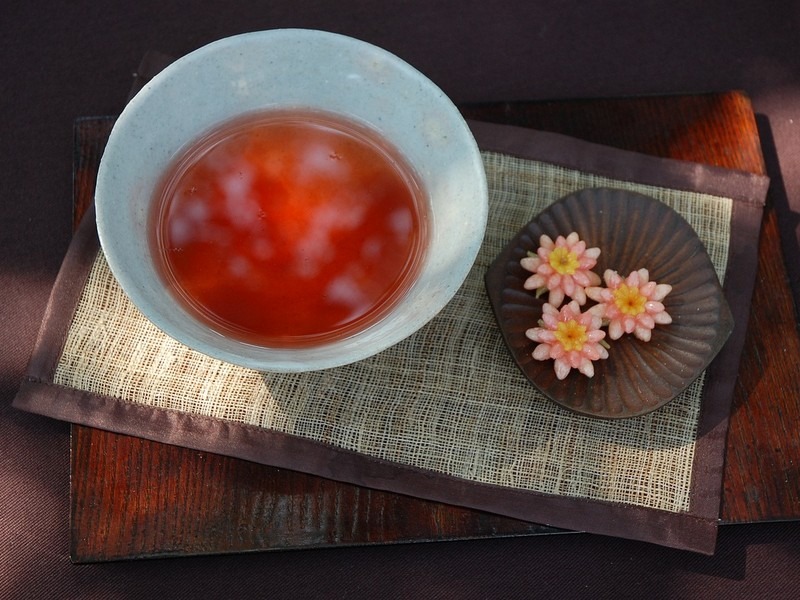
What is omija hwachae (오미자 화채)?
Omija hwachae (오미자 화채) is a delightful beverage primarily crafted from the juice of the Omija fruit. The name ‘Omija’ originates from ‘Omi (오미),’ signifying the presence of all five flavors (sweet, sour, bitter, spicy, and salty). In Korea, Omija fruits have long been valued for their health benefits. To prepare Omija hwachae (Omija punch 오미자 화채), ice, sugar, and additional fruits are added, resulting in a refreshing drink.
What does omija hwachae mean in Dae-Jang-Geum?
The scene in which Jang-Geum, the main character, carefully prepares the dish for the royal family resonated with many viewers. This drink truly encapsulates Korean tradition, culture, and history, reflecting the beautiful traditions and craftsmanship showcased in Dae-Jang-Geum.
Squid game (오징어게임): Dalgona and Traditional Korean Lunch Box (Dosirak)
By now, you’re likely familiar with the hit Netflix drama Squid Game. This immensely popular series resonated with Koreans nostalgic for childhood games and captivated international viewers navigating the intricacies of each traditional Korean game. Korean games like ‘Mugunghwa Flower’ and the ‘Dalgona Game’ have been beloved by Korean children for decades. Along with the games were some notable Korean foods you may have picked up on.
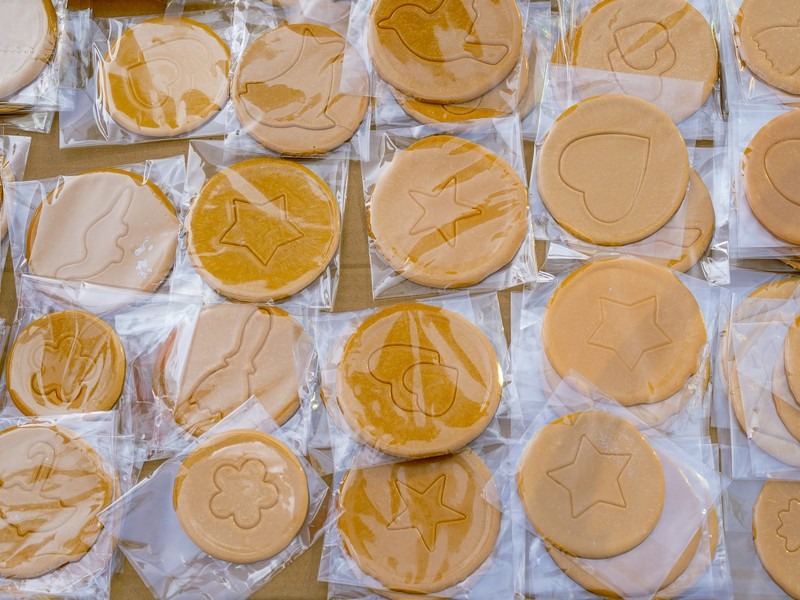
What is dalgona (달고나)?
‘Dalgona’ is a traditional Korean street snack, a sweet candy created by melting sugar and baking soda. You may have heard of ‘Dalgona coffee‘ early on during the pandemic. That wasn’t quite dalgona actually, but was fun to whip together.
In the traditional Dalgona game, the candy is delicately carved into various shapes (stars, circles, umbrellas, etc.), and participants aim to separate these shapes without causing damage. The game demands intricate handwork and patience, with the reward being an extra dalgona if successful. In Korea, you might find people gathered around dalgona street food carts engaging in this game.
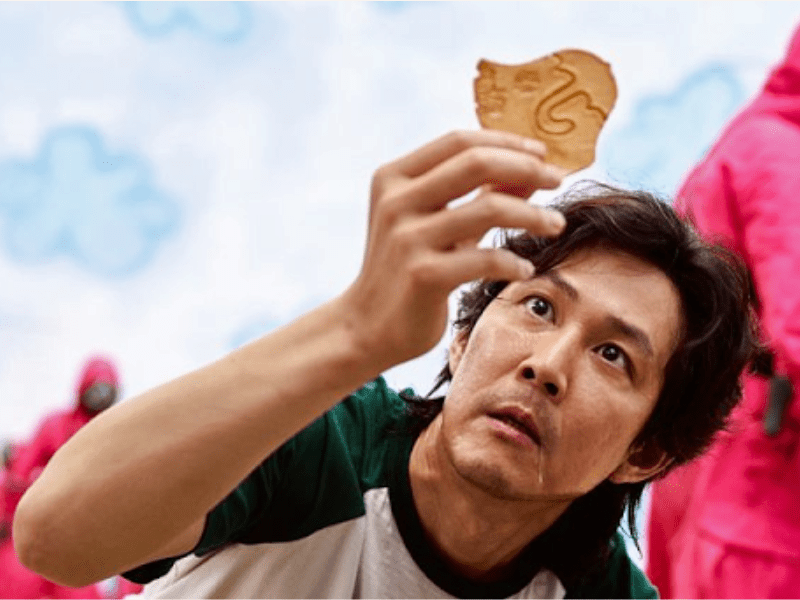
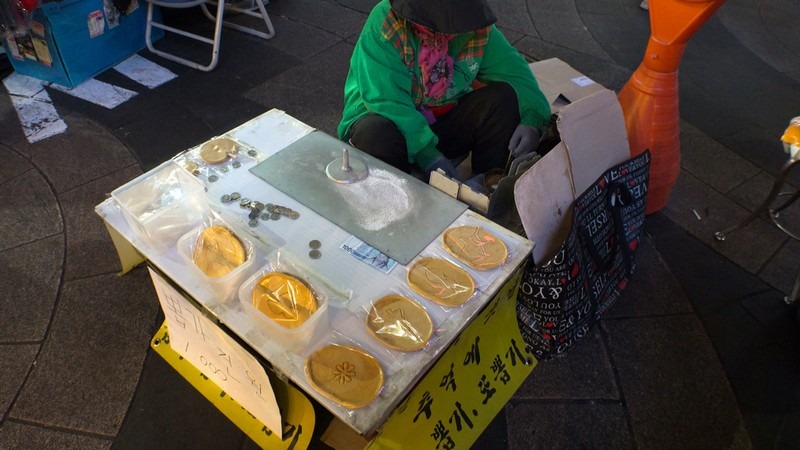
What does dalgona mean in Squid Game?
In Squid Game, the dalgona game takes center stage as a crucial competition. Participants confront the challenge of extracting the engraved shape from the dalgona without breaking it. This scene transcends mere childhood memories, introducing a tension where survival and death coalesce.
The use of childhood memory games as intense survival challenges starkly illustrates the contrast between naivety and brutality, a pivotal theme in Squid Game. This symbolically underscores the gap between childhood innocence and the harsh realities faced in adulthood, delivering a powerful psychological impact on both participants and viewers. The game became so popular that dalgona kits on Amazon became very popular as people at home wanted to see if they could lick their way to freedom too.
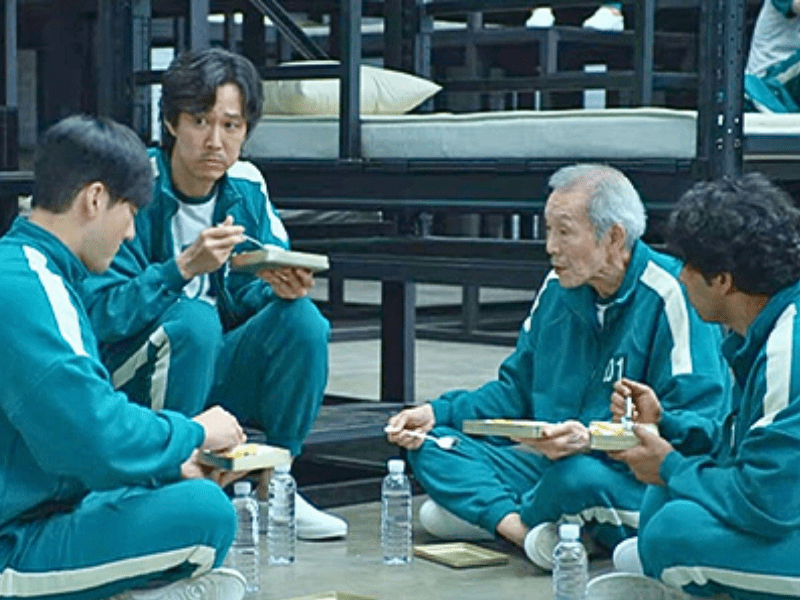
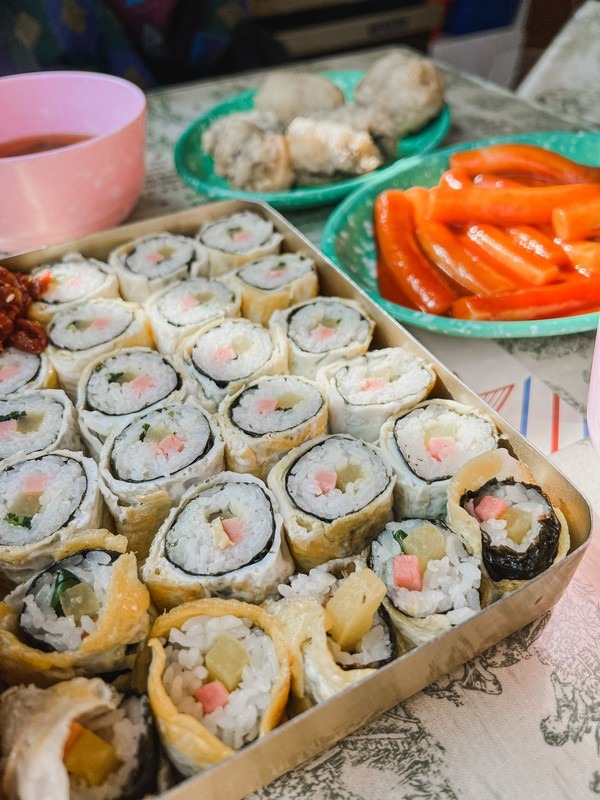
What is dosirak (도시락)?
Additionally, the drama features dosirak (도시락), a traditional Korean lunch box. These simple meals, served in metal lunch boxes, typically include rice, kimchi, egg, sausages, and a few uncomplicated side dishes. In Squid Game, these lunch boxes evoke memories of the participants’ past as children going to school and offer a respite from their dire situations.
If you’re visiting Seoul, you can find dosirak restaurants to have your own nostalgic Korean meal in places like the Donuimun Museum Village (돈의문박물관마을), an area that will transport you back to the 1960s and 1970s of Seoul.
Vincenzo (빈센조): Tteokbokki (떡볶이)
Tteokbokki holds a significant place in Korean culture, transcending its status as a mere snack. Affordable and widely accessible, tteokbokki is popular with people from all walks of life. If you’re traveling to Seoul, you can find it at every street food cart from Hongdae to Gangnam and find specialty tteokbokki in places like Tongin Market.
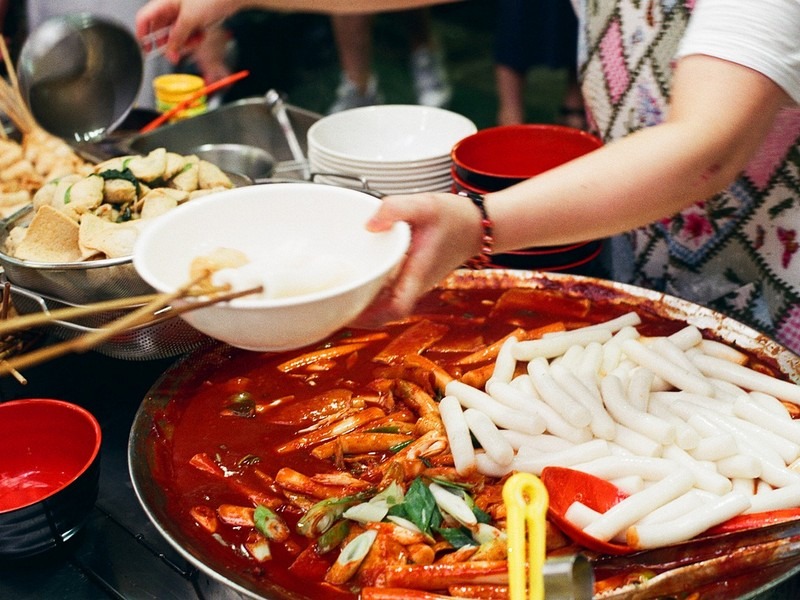
What is tteokbokki (떡볶이)?
Tteokbokki (떡볶이), also known as spicy or simmered rice cakes, is a popular Korean dish crafted from miniature gare-tteok, or rice cakes, named tteokmyeon. This ddeok is a chewy white cylindrical rice cake which is then topped with a spicy gochujang sauce. It was first made back in the late 1800s during the Joseon dynasty.
While various tteokbokki options exist, including those with cream sauce, rose sauce, cheese, or curry, the spicy chili paste-seasoned version remains the most beloved among Koreans. This preference aligns with the cultural tendency to embrace spicy foods as a means of relieving stress through a good sweat. You can get tteokbokki online easily so if you’re in need of a spicy pick-me-up, get some today.
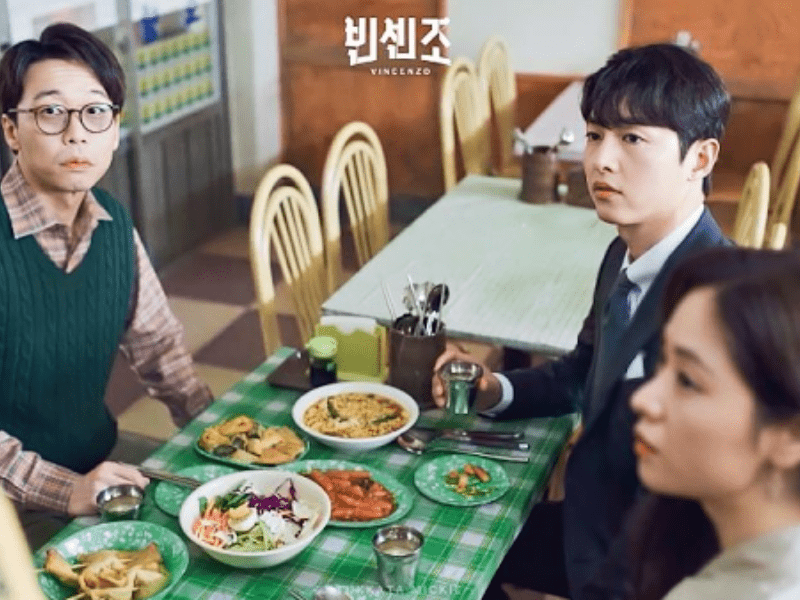
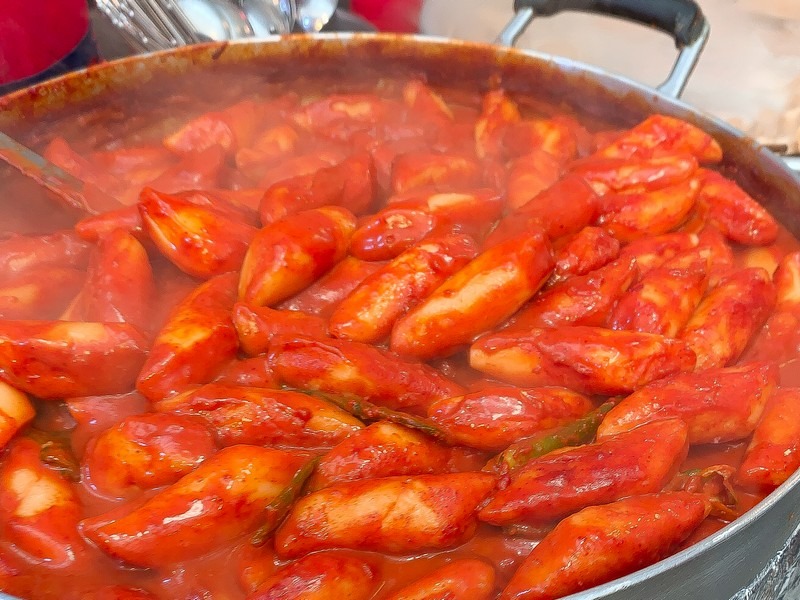
What does tteokbokki (떡볶이) mean in Vincenzo?
Many Koreans fondly recall stopping by a snack bar after school or grabbing tteokbokki on their way home from work, highlighting its accessibility and popularity. Tteokbokki’s simplicity in terms of ingredients and recipes makes it an easy dish to prepare at home.
In the drama Vincenzo, tteokbokki takes center stage as the main menu in a cart bar, a gathering place for key characters. Friends, family, and lovers come together over tteokbokki, fostering conversations and creating lasting memories. Through this communal dining experience, tteokbokki plays a pivotal role in facilitating social exchange and community formation. You’ll often find tteokbokki on the table in other Korean dramas during conversations that bring people together.
Itaewon Class (이태원 클라쓰): Sundubu jjigae (순두부 찌개)
In Korea, drinking is deeply ingrained in the culture as a symbol of social interaction and building relationships. This tradition extends beyond casual acquaintances, involving colleagues, friends, and even family. A night out for Koreans often involves five specific rounds. There is a booming hangover cure market in Korea as well, which is no surprise.
When Koreans engage in drinking, it’s common to pair it with spicy soup dishes. This choice is strategic, as the spiciness of the soup helps neutralize the bitterness of alcohol. Since Korean drinking sessions tend to be lengthy affairs, people prefer hearty, substantial foods over light snacks.
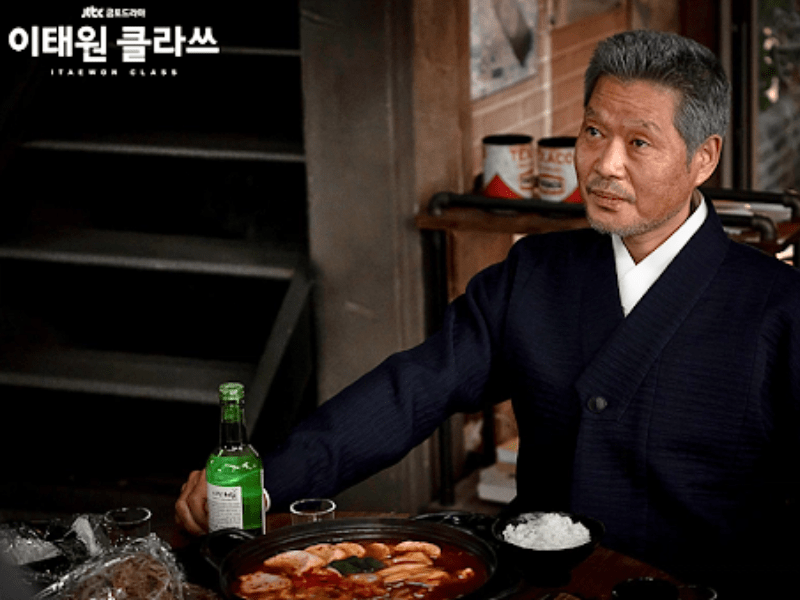

What is sundubu jjigae (순두부 찌개)?
Sundubu jjigae (순두부 찌개) is a spicy Korean soup made with soft tofu and vegetables. A mildly spicy stew that may or may not have seafood in the dish. The key ingredient sundubu originated in the village of Chodang when Chodang Heoyeop, a Joseon-era civil official, made tofu from the spring water and used sea water instead of brine.
Sundubu jjigae in Itaewon Class
In the drama Itaewon Class, sundubu jjigae takes the spotlight as a popular menu item in the restaurants owned by the main characters. A scene where the owner of a rival restaurant, a formidable competitor to the main character’s establishment, tastes the food creates tension and excitement among viewers. In Itaewon Class, sundubu jjigae becomes a symbol of the passion and confident spirit of the main characters, playing a crucial role in their individual growth and the development of their relationships.
Crash Landing On You (사랑의 불시착): Chimaek (치맥)
The Korean drama Crash Landing on You brought the joy and warmth of Korean culture to a global audience, showcasing the beloved combination of favorite Korean chicken brands and beer, known as chimaek. While chimaek is often considered an ‘anju’ or a snack enjoyed with alcoholic beverages, it has become more of an everyday comfort food.
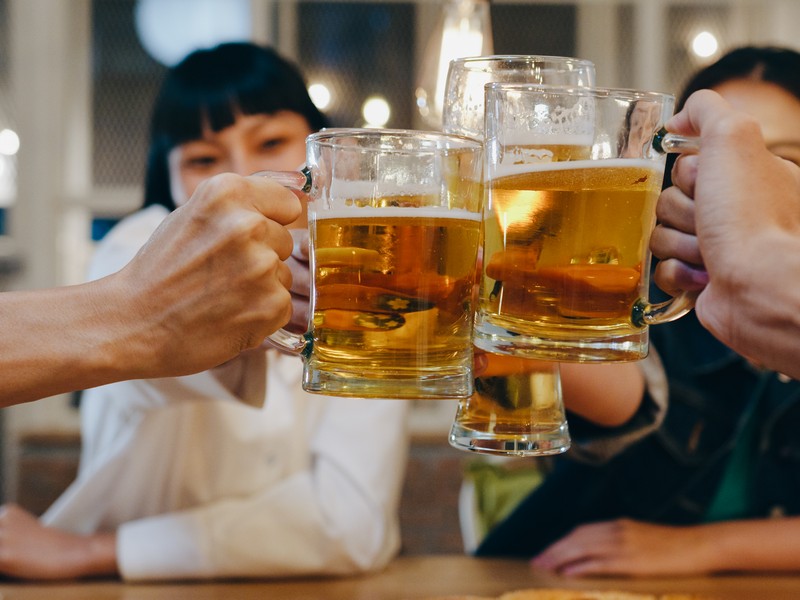
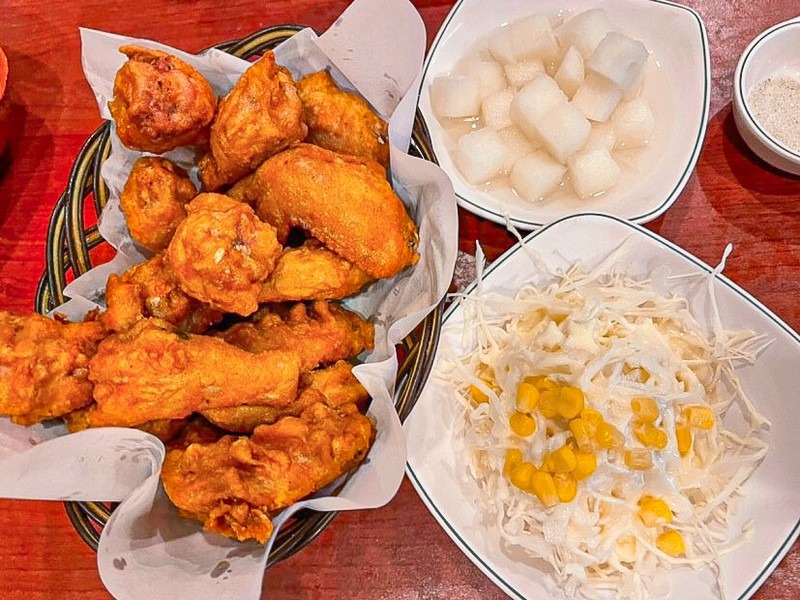
What is chimaek (치맥)?
Chimaek is an immensely popular pairing in Korea, featuring crispy chicken and refreshing beer in perfect harmony. It has evolved into a symbol of joyous moments when people come together for good times. Quick tip: If you plan to enjoy chimaek during a significant sports event in Korea, be sure to order in advance, as the demand can be high.
Since the 2002 FIFA World Cup, Koreans have made a tradition of watching sports games while relishing chimaek in restaurants. This culture extends beyond sports events, finding its way into daily life and even into popular dramas like Crash Landing on You.
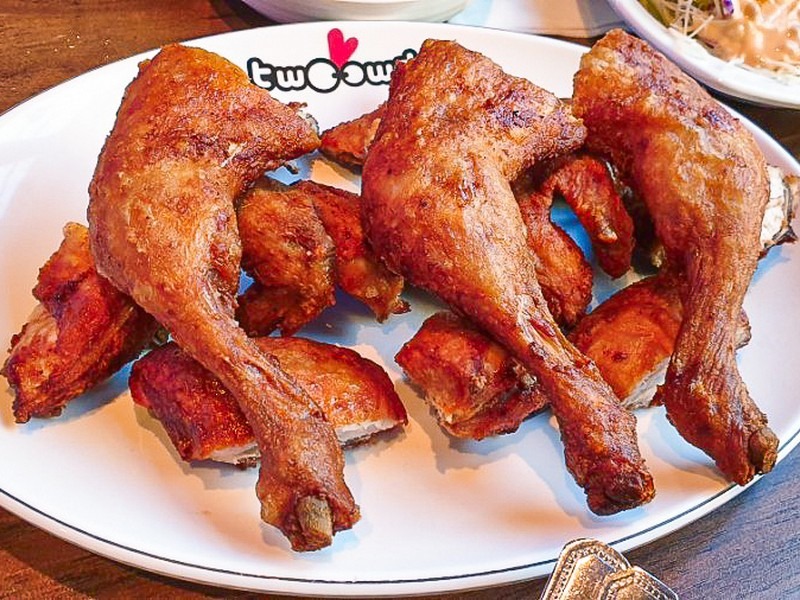
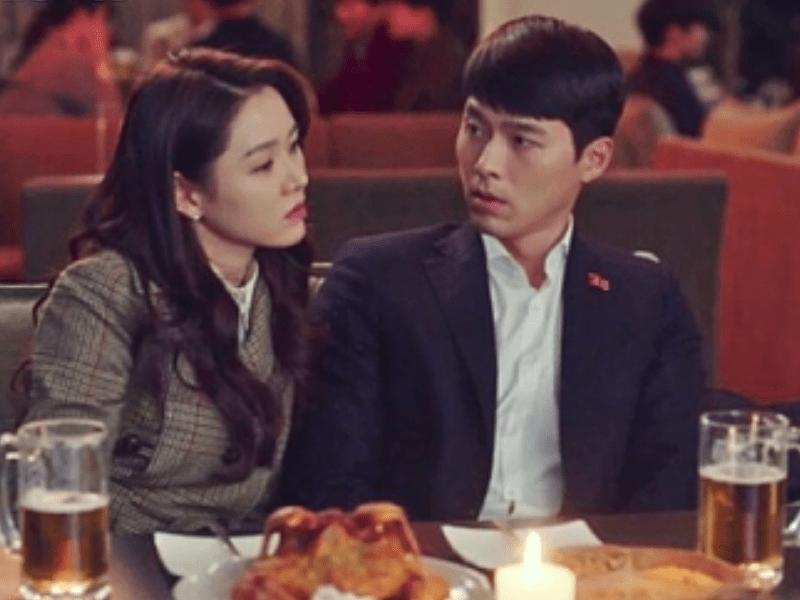
How does chimaek show up in Crash Landing on You?
In the show, chimaek serves as a powerful symbol, transcending boundaries between South and North Koreans. It represents the shared pleasure derived from universal passions, such as sports, fostering connections beyond cultural differences. The drama conveys a hopeful message about discovering common human values and joy despite political and social divisions.
Chimaek also becomes a pivotal medium for the main characters in the show to understand and embrace each other’s cultures. The scene where Yoon Se-ri and Ri Jeong-hyeok share chimaek is portrayed as a moment breaking down walls and understanding each other on a deeper level.
Korean dramas and films are fun to watch, but if you know a bit more about the symbolism and Korean culture, you can get even more out of the storylines. Pay attention to the food, and see what you think it means.
Did you like this post? Pin IT!
